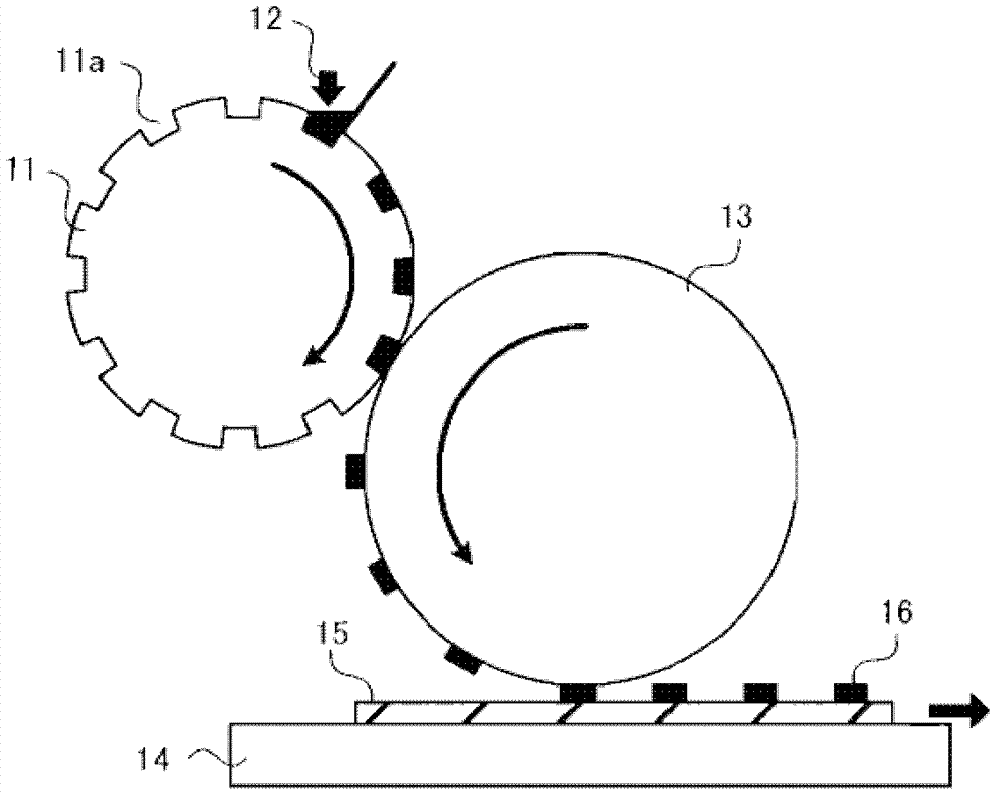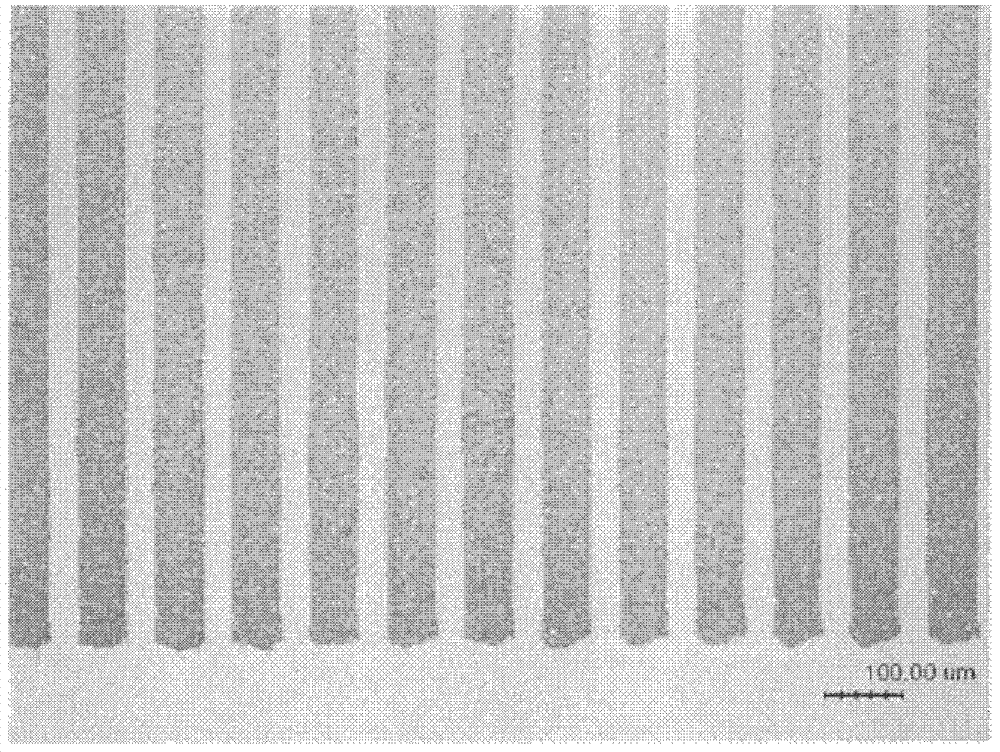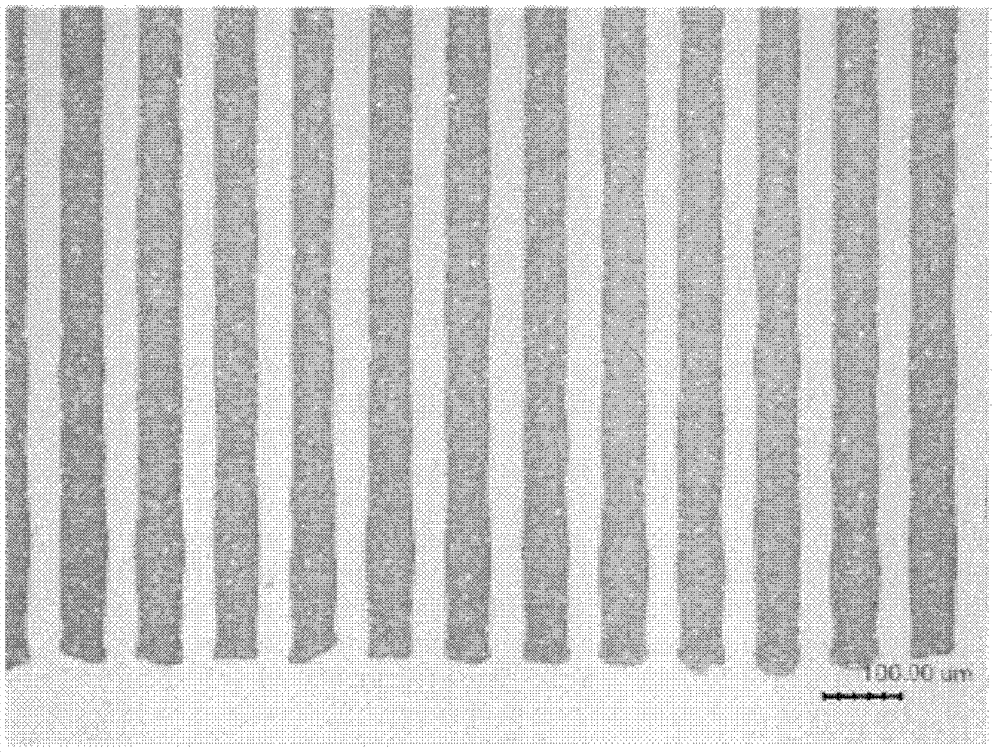Conductive paste
A technology of conductivity and paste, which is applied in the direction of conductive coating, conductive pattern formation, conductive layer on insulating carrier, etc., can solve the problems such as difficulty in obtaining paste, and achieve excellent line width reproducibility, good conductivity, and close adhesion excellent effect
- Summary
- Abstract
- Description
- Claims
- Application Information
AI Technical Summary
Problems solved by technology
Method used
Image
Examples
Embodiment
[0105] Hereinafter, although an Example and a comparative example are shown and this embodiment is demonstrated concretely, this invention is not limited to these Examples. In addition, the following "%" is a mass basis unless otherwise specified, and the weight average molecular weight is calculated|required as the value calculated|required in terms of polystyrene using gel carrier liquid chromatography (HLC-8120 GPC TOSOH CORPORATION make) .
[0106] Synthesis of Organic Binder Resins
Synthetic example 1
[0108] In the reaction vessel equipped with stirring device, thermometer and condenser, add 288g (0.36mol) polycarbonate diol derived from 1,5-pentanediol and 1,6-hexanediol ( Asahi Kasei Chemicals Corporation manufacture, T5650J, number average molecular weight 800), 45g (0.09mol) bisphenol A type propylene oxide adduct diol (ADEKA CORPORATION company manufacture, BPX33, number average molecular weight 500), 81.4g (0.55mol ) dimethylol butyric acid as dimethylolalkanoic acid and 11.8 g (0.16 mol) of n-butanol as a molecular weight regulator (reaction terminator), 250 g of carbitol acetate as a solvent (manufactured by Daicel Corporation) , Dissolve all raw materials at 60 °C.
[0109] While stirring the polyol component, 200.9 g (1.08 mol) of trimethylhexamethylene diisocyanate as polyisocyanate was dropped through the dropping funnel. After the dropwise addition was terminated, the reaction was continued while stirring at 80° C., and the absorption spectrum of the isocyanat...
Synthetic example 2
[0112]In the reaction vessel equipped with stirring device, thermometer and condenser, add 360g (0.45mol) polycarbonate diol derived from 1,5-pentanediol and 1,6-hexanediol ( Manufactured by Asahi Kasei Chemicals Corporation, T5650J, number average molecular weight 800), 81.4 g (0.55 mol) of dimethylol butanoic acid as dimethylol alkanoic acid and 11.8 g (0.16 mol) as a molecular weight modifier (reaction terminator) n-butanol, 250 g of carbitol acetate (manufactured by Daicel Corporation) as a solvent, and all the raw materials were dissolved at 60°C.
[0113] While stirring the polyol component, 200.9 g (1.08 mol) of trimethylhexamethylene diisocyanate as polyisocyanate was dropped through the dropping funnel. After the dropwise addition was terminated, the reaction was continued while stirring at 80° C., and the absorption spectrum of the isocyanate group (2280 cm -1 ) disappears, ending the reaction. Carbitol acetate was added so that the solid content would become 60 wt...
PUM
| Property | Measurement | Unit |
|---|---|---|
| Acid value | aaaaa | aaaaa |
| Acid value | aaaaa | aaaaa |
| Acid value | aaaaa | aaaaa |
Abstract
Description
Claims
Application Information
 Login to View More
Login to View More - R&D
- Intellectual Property
- Life Sciences
- Materials
- Tech Scout
- Unparalleled Data Quality
- Higher Quality Content
- 60% Fewer Hallucinations
Browse by: Latest US Patents, China's latest patents, Technical Efficacy Thesaurus, Application Domain, Technology Topic, Popular Technical Reports.
© 2025 PatSnap. All rights reserved.Legal|Privacy policy|Modern Slavery Act Transparency Statement|Sitemap|About US| Contact US: help@patsnap.com



